A bogged-down chainsaw is likely one of the most common issues you will come across when working with a chainsaw. This will instantly put a delay on any woodworking projects you’re currently working on. There are several different factors that can cause this issue, but luckily it’s usually an easy enough fix.
The most common causes of a chainsaw bogging down include having an incorrect fuel mixture, dirty carburetor, clogged air filter, or a dirty fuel filter or fuel lines.
A combustion system relies on a perfect mixture of gas, oil, and air. If this is not being fed to the chainsaw in the proper ratio, you must find the source of the issue and you can easily fix it. This article will provide you with detailed information on these causes of a chainsaw bogging down, and what to do to fix the problem!
Table of Contents
- Chainsaw Bogs Down Under Load – Common Reasons and Solutions
- 3 Most Common Causes of a Bogged Down Chainsaw
- Preventative Chainsaw Maintenance to Avoid Bogging
- FAQs (Frequently Asked Questions)
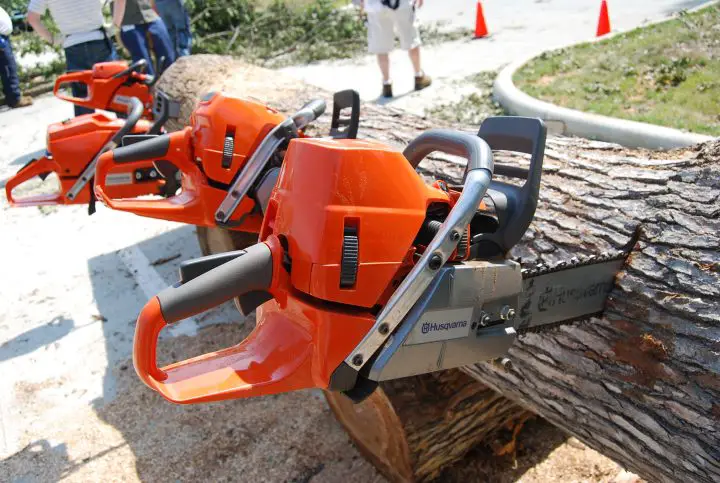
Chainsaw Bogs Down Under Load – Common Reasons and Solutions
| Reason | Solution |
|---|---|
| Clogged Air Filter | 1. Remove the air filter from the chainsaw. 2. Wash the air filter in soapy water, scrubbing with a soft brush if necessary, until it is completely clean. Replace if it remains dirty after washing. 3. Remove the spark arrestor and gently scrub it with a wire brush to remove corrosion or debris. |
| Incorrect Fuel Mixture | 1. Refer to the operator’s manual for the correct fuel mixture ratio (usually 30:1, 40:1, or 50:1). 2. If the chainsaw is already filled with an incorrect fuel mixture, siphon it out before replacing it with the correct ratio mixture. 3. Use mid-grade gasoline with an octane rating of at least 89. |
| Carburetor Problems | 1. Clean the carburetor using a carburetor cleaning solution if it is clogged with corrosion. 2. If the carburetor is not clogged, check its tuning and adjust if necessary. 3. Adjust the idle speed, low-speed, or high-speed screw settings to improve performance and reduce bogging. |
Preventative maintenance measures to avoid bogging issues:
- Clean your chainsaw before and after each use.
- Use new or stabilized gas, and avoid using gas stored for more than 30 days without a fuel stabilizer.
- Lubricate your chain with bar oil to prevent overheating and friction-related issues.
- Sharpen the blades regularly to maintain optimal cutting performance and reduce strain on the engine.
3 Most Common Causes of a Bogged Down Chainsaw
The three most common causes of a chainsaw bogging down:
- Clogged air filter
- Incorrect fuel mixture
- Carburetor problems
Several potential causes may lead to a chainsaw bogs down at full throttle. Most of them are a result of the combustion engine’s inability to access either air or fuel. If the chainsaw isn’t able to get enough of either, then this can cause the chainsaw to stall.
Let’s take a look at each in more detail!
Clogged Air Filter
Many chainsaw operators first notice a problem with chainsaws bogging down when they’re using the chainsaw under load because the chainsaw chain stops under load. This is usually the result of poor air circulation which is caused by a clogged air filter on the chainsaw.
Before you adjust the high-speed screw for the carburettor adjustment, it’s important to clean the air filter and the spark arrestor. If either of these is dirty, it can cause the chainsaw bog down, and cleaning may solve the problem.
How to Fix a Clogged Air Filter
- Remove the air filter from the chainsaw. If unsure of its location, consult the chainsaw’s operating manual or contact the manufacturer.
- To access the air filter, remove the top cover of the chainsaw and the spark plug boot for safety.
- Use a screwdriver to remove the air filter from its housing.
- Wash the air filter in soapy water, scrubbing with a soft brush if necessary, until it is completely clean. If it remains dirty after washing, replace the air filter.
- Remove the spark arrestor, located behind the muffler cover, and gently scrub it with a wire brush to remove corrosion or debris until clean.
To fix, or clean, a clogged air filter on your chainsaw you will first need to remove the air filter from the chainsaw. If you aren’t sure where the air filter is located, be sure to check your chainsaw’s operating manual or contact your manufacturer.
In general, you will need to remove the top cover of the chainsaw and remove the spark plug boot for safety precautions. Now, the air filter should be visible and you will be able to remove it from its housing with the aid of a screwdriver.
With the air filter removed, wash it in soapy water until the air filter comes completely clean. The air filter can also be scrubbed with a soft brush, if necessary, to remove any particulates that are clinging to the edges. If the air filter still looks dirty even after washing it, then this is a clear indication that the air filter needs to be replaced.
The next step is to remove the spark arrestor, which is a small screen located behind the muffler cover on the chainsaw. The spark arrestor can then also be scrubbed gently with a wire brush to remove any corrosion or debris until it’s clean.
As already mentioned, but to reiterate its importance, if you’re trying to troubleshoot a chainsaw bogging down, it’s always a good idea to check the air filter and clean it if necessary before you start messing with the fuel adjustment screws on the carburetor. Many chainsaw manuals and manufacturers will discourage adjusting the carburetor.
Incorrect Fuel Mixture
If your chainsaw bogs down at full throttle, this is more often than not a sign of an improper gas-to-oil ratio, otherwise referred to as an incorrect fuel mixture. If there is too much gasoline in relation to the amount of oil used, this is referred to as a “rich mixture” and can cause the chainsaw to not only run poorly but also bog down.
How to Fix Incorrect Fuel Mixture
- Refer to your operator’s manual to determine the correct fuel mixture ratio for your chainsaw. If the manual is not available, contact the manufacturer directly for information.
- Note that most chainsaws operate on one of the following gas-to-oil ratios: 30:1, 40:1, or 50:1.
- If you’ve already filled your chainsaw with an incorrect fuel mixture, siphon the fuel out before replacing it with the correct ratio mixture.
- Use mid-grade gasoline with an octane rating of at least 89 for your chainsaw.
- When mixing fuel, always add the gasoline to the oil, not the other way around.
So how do you determine the correct mixture of fuel for your chainsaw? You should be able to find the answer to this question in your operator’s manual. Here, the appropriate ratio of gas to oil you should be using for your chainsaw will be specified. If you cannot locate your manual, or the information, I recommend contacting your chainsaw manufacturer directly.
Most chainsaws operate on one the following gas-to-oil ratios:
- 30:1
- 40:1
- 50:1
If you’ve already filled your chainsaw up with an improper mixture of fuel, you will first need to siphon the fuel out before you can replace it with the correct ratio mixture.
The best gasoline for a chainsaw is mid-grade gasoline which has an octane rating of at least 89. When making a fuel mix for a chainsaw, be sure to mix the gasoline into the oil, and not the other way around). Something similar to this mixing bottle would be of great help for this process:
- Haishine Fuel Mixing Bottle : This product has excellent wear resistance, durability, low noise and stable performance. With high quality assurance, our products will be your first choice for peace of mind
- Fuel mixing bottle: Our Haishine fuel mixing bottles are very high quality and will not leak your supplies
- Package includes: 1 x Fuel Mixing Bottle--Capacity-1.0L~1.5L
- Wide range models: Fit 2-Stroke Chainsaw Trimmer Mower Motorized Bicycle Engine
- Quality Service: We provide you with super fast speed and guaranteed quality. If you have any questions about the product, you can contact our customer service at any time, we will provide you with quality answers 24 hours a day!
Prices pulled from the Amazon Product Advertising API on:
Product prices and availability are accurate as of the date/time indicated and are subject to change. Any price and availability information displayed on [relevant Amazon Site(s), as applicable] at the time of purchase will apply to the purchase of this product.
Carburetor Problems
Carburetor problems are very common for chainsaws bogging down. The carburetor is the part of the chainsaw’s engine which is designed to regulate the amount of fuel in the cylinder and is generally preset at the factory to accomplish the task.
If, or when, the carburetor becomes clogged with debris, it will prevent the right amount of air from moving through the carburetor to keep the chainsaw’s engine running.
Some other symptoms that you might run into that imply you have a clogged carburetor along with the chainsaw bogging down, include things like chainsaw smoking when cutting or chainsaw overheating.
How to Fix Carburetor Problems
- If your chainsaw overheats or bogs down due to a carburetor issue, repair it immediately to prevent permanent damage to the engine.
- Use a carburetor cleaning solution for carburetors clogged with corrosion from extended use.
- If the carburetor is not clogged, check its tuning as improper tuning can also cause bogging. You may need to adjust the carburetor.
- Adjust the carburetor by tuning the idle speed, low-speed, or high-speed screw adjustments.
- If the chainsaw loses power when the throttle is released, increase the idle screw setting.
- Tighten the idle adjustment if the engine stops while idling.
- If the engine bogs when you depress the throttle, tighten the high or low-speed adjustment screw to improve performance.
- To reduce bogging issues, adjust the fuel/air mixture:
- Turn the low-speed fuel adjustment screw to reduce the richness of the mixture.
- Decrease the fuel richness with the high-speed fuel adjustment screw if bogging down occurs.
If you run into a carburetor issue that causes the chainsaw to overheat as well as the chainsaw bogs down, you should seek to repair the chainsaw immediately to prevent permanent damage to the engine components.
You can use a carburetor cleaning solution to clean carburetors that are clogged with corrosion from extended use. However, if you find that the carburetor is not clogged, the other issue that could cause a carburetor to bog a chainsaw is the carburetor’s tuning, and therefore, you will need to perform carburetor adjustment.
Tuning, or adjusting, the carburetor involves adjusting either the idle speed, the low-speed, or the high-speed screw adjustments on the carburetor. It’s guaranteed that the chainsaw will lose power whenever the throttle is released if the idle screw is turned up too low.
If in any case, the engine stops while idling then the idle adjustment should be tightened. If your engine doesn’t bog until you depress the throttle, you should either tighten the high or low-speed adjustment screw to enhance its performance.
Reducing the richness of the fuel/air mixture can also help to prevent bogging issues, which you can do so by turning the low-speed fuel adjustment screw. The high-speed fuel adjustment screw is typically turned down to reduce fuel richness if chainsaw bogging down is a problem.
Note: All of these adjustments will help to improve the air/fuel mixture in the chainsaw’s engine.
Preventative Chainsaw Maintenance to Avoid Bogging
Often when a chainsaw bogs down at full throttle, or a Stihl chainsaw bogs down when cutting, it’s a result of poor maintenance on the chainsaw and its components.
Taking proper care of a chainsaw before and after each and every use, along with inspecting its different components for wear and tear throughout is very important. These simple steps can help you identify potential problems before they become serious enough to cause permanent engine damage or cause the chainsaw stall completely.
Here are some ways to keep your chainsaw maintained to prevent the chainsaw bogging down:
- Clean your chainsaw
- Use new or stabilized gas
- Lubricate your chain
- Sharpen the blades
Clean Your Chainsaw
One of the biggest problems with chainsaws that leads to them damaging their mechanisms or engine is the build-up of particulates like sawdust and other debris during the process of cutting.
As already mentioned, cleaning your chainsaw before and after each operation thoroughly can help prevent the build-up that leads to clogged air filters and damaged carburetors.
Use New or Stabilized Gas
As a general rule of thumb to follow, you should never use gas that has been stored in a chainsaw’s gas tank for more than 30 days unless you’ve added a fuel stabilizer to it. Stabilizers are designed to help keep fuel stable and fresh for months, and without them, you may experience problems or severe damage.
Lubricate Your Chain
Insufficient lubrication can cause a chainsaw to work harder than it is supposed to due to the addition of friction and heat, and this, in turn, will result in chainsaw bogs on throttle. If this is left unchecked, the overheating related to friction can stall a chainsaw or severely damage it.
Therefore, it is very important to keep your chainsaw lubricated with chainsaw bar oil will make sure it cuts clean without stalling or overheating. Here is an example of some chainsaw bar oil readily available on Amazon:
- Extends bar, chain and sprocket life
- All season performance
- Reduces friction and wear
- High tack reduces oil sling
- For use with all chainsaws
Prices pulled from the Amazon Product Advertising API on:
Product prices and availability are accurate as of the date/time indicated and are subject to change. Any price and availability information displayed on [relevant Amazon Site(s), as applicable] at the time of purchase will apply to the purchase of this product.
Sharpen the Blades
Trying to make cuts with a dull chainsaw is probably one of the quickest ways to wear down the motor and cause undue wear and tear on the rest of the chainsaw components as well. Chainsaw blades can be sharpened with a metal file by yourself in your garage, or you can take your chainsaw to a small repair shop to have it professionally sharpened there.
If you are able to keep up with your chainsaw’s maintenance each and every time you use it, you will be able to significantly increase the lifespan of your machine. Since chainsaws aren’t exactly the cheapest, it’s definitely worth taking the extra time to keep the engine cared for both during and between your uses.
Final thoughts: If you find yourself in a position where your chainsaw just doesn’t have the power you were hoping for, you should immediately attempt some troubleshooting before you take it to a small repair shop. The chances are, that with just a little bit of your time and patience, you should be able to correct the chainsaw bogs down issues easily by yourself.
FAQs (Frequently Asked Questions)
How do I stop my chainsaw from bogging down?
To stop your chainsaw from bogging down, I would first recommend checking your air filter. Remove the filter and wash it in soapy water until the air filter comes completely clean. The air filter may also be scrubbed with a soft brush, if necessary. Next, check the fuel mixture to ensure you have the correct ratio of oil to gas. The specific ratio you require will be specified in your owner’s manual. You may also need to clean or adjust the carburetor. You can use a carburetor cleaning solution to clean carburetors that are clogged with corrosion.
Why does my chainsaw lose power when cutting?
Your chainsaw is losing power when cutting as a result of the combustion engine’s inability to access either air or fuel. If the chainsaw isn’t able to get enough of either, then this can cause the chainsaw to stall. This will likely be due to a clogged air filter, incorrect fuel mixture, or carburetor problems.
Why does my chainsaw dies at full throttle?
Your chainsaw is dying at full throttle due to an issue with your carburetor, incorrect fuel mixture, or a clogged air filter. It’s strongly advised to cease operation and troubleshoot your chainsaw immediately to ensure no serious damage is done to the motor or other components.
Why is my chainsaw losing power under load?
It could be due to several factors including a dull or damaged chain, a clogged air filter, a faulty spark plug, improper fuel mixture, a clogged fuel filter, carburetor issues, clogging in the exhaust port or spark arrestor, or general engine wear. To address this, you may need to sharpen or replace the chain, clean or replace the air filter and fuel filter, inspect and replace the spark plug if necessary, ensure the correct fuel mix is used, adjust or service the carburetor, and clean the exhaust port or spark arrestor. Regular maintenance and addressing these common issues can often restore your chainsaw’s power.
What causes my chainsaw to bog down when accelerating?
It is is typically caused by issues related to air and fuel delivery or engine efficiency. Common culprits include a dirty air filter limiting the airflow, an improper fuel mixture that’s either too rich or too lean for optimal combustion, a clogged fuel filter reducing fuel flow, a faulty spark plug leading to inefficient combustion, or incorrect carburetor settings that fail to adjust the fuel/air mixture properly during operation. Additionally, a blocked exhaust system, such as a clogged muffler or spark arrestor, can restrict exhaust emissions and affect performance. Wear and tear on engine components over time can also contribute to this problem. Addressing these issues usually involves cleaning or replacing the air and fuel filters, adjusting the fuel mixture, servicing the carburetor, checking the spark plug, and ensuring the exhaust system is clear of blockages. Regular maintenance is key to preventing bogging and ensuring your chainsaw runs smoothly.
Why does my engine bog down when accelerating?
When your engine bogs down during acceleration, it’s often a sign of issues related to fuel delivery, air intake, ignition, or exhaust systems. Common causes include a dirty air filter, restricting the flow of air into the engine; a faulty fuel injector or clogged fuel filter, limiting the amount of fuel delivered to the engine; issues with the spark plugs or ignition system, preventing efficient combustion; or a blocked exhaust system, such as a clogged catalytic converter, which restricts the outflow of exhaust gases. Additionally, incorrect fuel/air mixture adjustments, vacuum leaks, or worn out engine components can also lead to bogging. To resolve this issue, it’s important to inspect and potentially replace or clean the air filter, fuel filter, spark plugs, and check for any exhaust system blockages. Ensuring that your vehicle’s engine is properly tuned and that all components are in good working order is crucial for optimal performance. Regular maintenance and addressing specific problems as they arise are key strategies to prevent your engine from bogging down during acceleration.
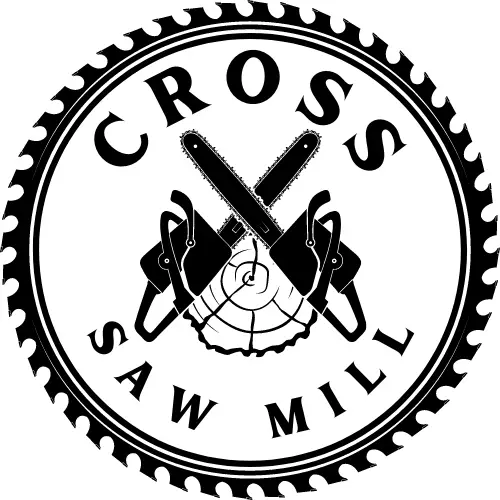


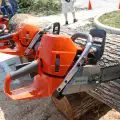
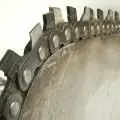
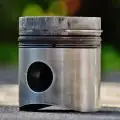
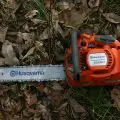

Thanks Dave, perfect advice. you stoked my memory and all the procedures of operating returned, like second nature.
(air filter was dirty)